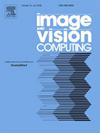Label refinement for change detection in remote sensing
IF 4.2
3区 计算机科学
Q2 COMPUTER SCIENCE, ARTIFICIAL INTELLIGENCE
引用次数: 0
Abstract
Change detection in remote sensing aims to detect changes occurring in the same geographical area over time. Existing methods present two main challenges: (1) relying on single-scale features to capture multi-scale object changes, which limits their ability to effectively handle multi-scale change; and (2) misclassification issues caused by prediction uncertainty, particularly in regions near decision boundaries, leading to reduced overall detection performance. In this study, to address these limitations, we propose LRNet, a multi-scale change detection framework designed to enhance the perception of objects at varying scales and refine change region details during decoding. Abandoning the use of fixed thresholds for classification, LRNet incorporates a Label Refinement (LR) strategy that propagates information from high-confidence regions to low-confidence regions by evaluating feature-space similarity, enabling precise grouping of pixels within change regions. Extensive experiments on benchmark datasets — SYSU-CD, LEVIR-CD+, and SECOND-CD — demonstrate that LRNet outperforms state-of-the-art methods, with significant improvements of 7.9% in F1 and 12.38% in IoU on the challenging SECOND-CD dataset.
遥感中用于变化检测的标签细化
遥感变化探测的目的是探测同一地理区域随时间发生的变化。现有方法存在两个主要挑战:(1)依赖于单尺度特征来捕获多尺度目标变化,限制了它们有效处理多尺度变化的能力;(2)预测不确定性导致的误分类问题,特别是在决策边界附近的区域,导致整体检测性能降低。在本研究中,为了解决这些限制,我们提出了LRNet,一种多尺度变化检测框架,旨在增强对不同尺度物体的感知,并在解码过程中细化变化区域细节。LRNet放弃使用固定阈值进行分类,采用标签细化(LR)策略,通过评估特征空间相似性将信息从高置信度区域传播到低置信度区域,从而在变化区域内实现像素的精确分组。在基准数据集(SYSU-CD、LEVIR-CD+和SECOND-CD)上进行的大量实验表明,LRNet优于最先进的方法,在具有挑战性的SECOND-CD数据集上,F1和IoU的显著提高分别为7.9%和12.38%。
本文章由计算机程序翻译,如有差异,请以英文原文为准。
求助全文
约1分钟内获得全文
求助全文
来源期刊

Image and Vision Computing
工程技术-工程:电子与电气
CiteScore
8.50
自引率
8.50%
发文量
143
审稿时长
7.8 months
期刊介绍:
Image and Vision Computing has as a primary aim the provision of an effective medium of interchange for the results of high quality theoretical and applied research fundamental to all aspects of image interpretation and computer vision. The journal publishes work that proposes new image interpretation and computer vision methodology or addresses the application of such methods to real world scenes. It seeks to strengthen a deeper understanding in the discipline by encouraging the quantitative comparison and performance evaluation of the proposed methodology. The coverage includes: image interpretation, scene modelling, object recognition and tracking, shape analysis, monitoring and surveillance, active vision and robotic systems, SLAM, biologically-inspired computer vision, motion analysis, stereo vision, document image understanding, character and handwritten text recognition, face and gesture recognition, biometrics, vision-based human-computer interaction, human activity and behavior understanding, data fusion from multiple sensor inputs, image databases.
 求助内容:
求助内容: 应助结果提醒方式:
应助结果提醒方式:


